|
John Tyman's Cultures in Context Series Torembi and the Sepik A Study of Village Life in New Guinea |
|
Topic No. 11: Entertainment, Music and Art |
|
John Tyman's Cultures in Context Series Torembi and the Sepik A Study of Village Life in New Guinea |
|
Topic No. 11: Entertainment, Music and Art |
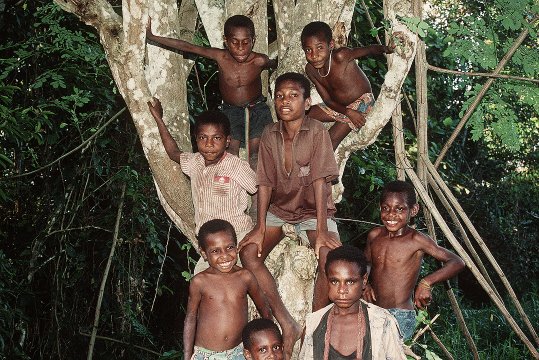 |
| 180. Children here are never tempted to sit in front of a TV all day. There is no electricity and the closest TV transmitter is in Port Moresby, on the other side of the mountains. |
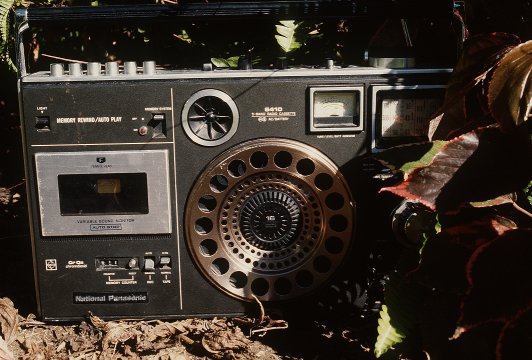 |
| 181. Instead, those who can afford batteries, listen to music on a radio or tape recorder. New Guinea stations broadcast pop music together with the sounds of local string bands. |
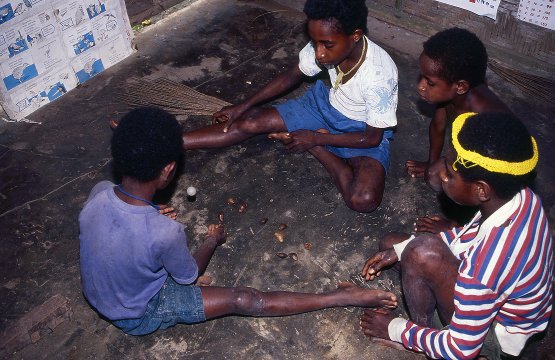 |
| 183. Some games are universally enjoyed … like jacks (or knuckle bones) played here in the corner of a classroom after school. |
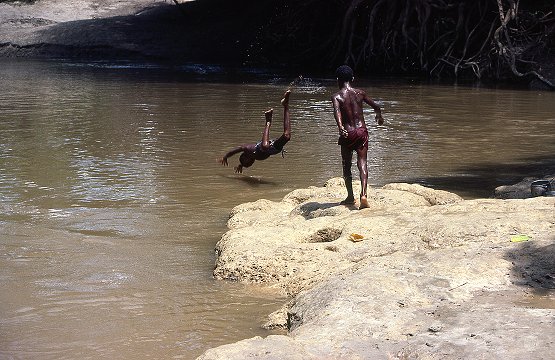 |
| 184. Young boys play for hours on the riverbank: but girls have to help their mothers much of the time. |
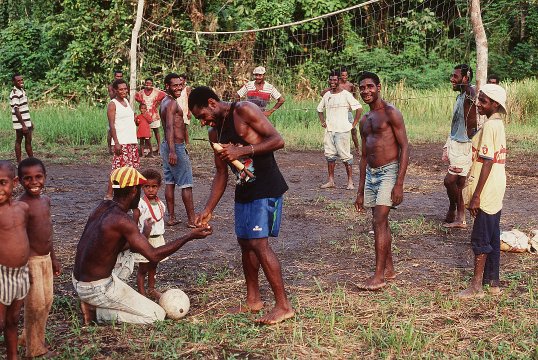 |
| 185. The teenagers play volleyball on Sunday afternoons … and soccer, too, now. (Also see video extracts 21 & 22) |
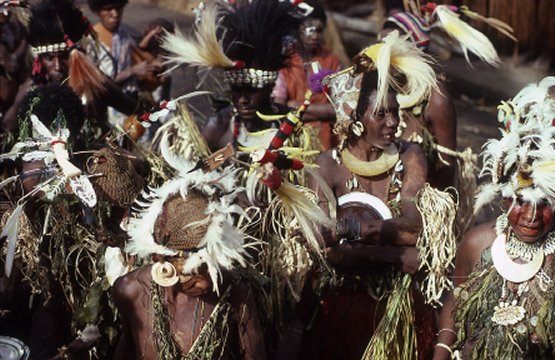 |
| 188. Music actually plays an important part in the ceremonial life of the community and a ‘sing-sing’ (which is really a dance) is a major event … involving both men and women. |
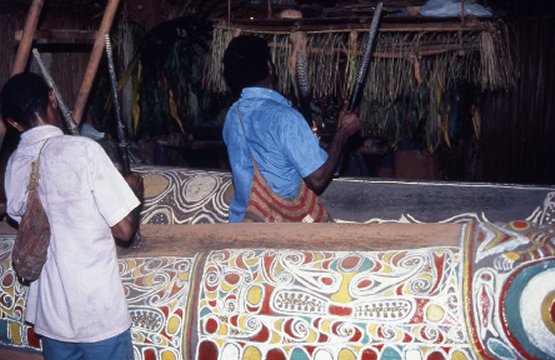 |
| 191. They are played by men, usually in pairs, who strike the outside of the log with heavy wooden sticks. |
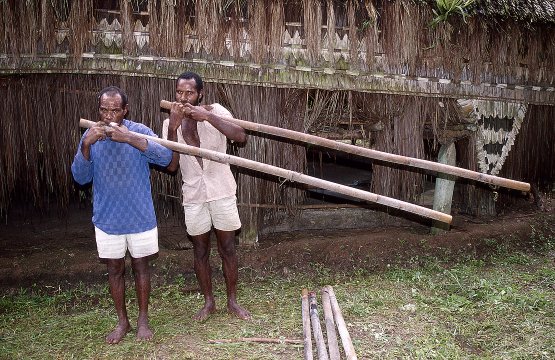 |
| 196. They also have many flutes in Torembi. Some of these are several metres long; others are much shorter. They all function as mouthpieces for ancestral spirits. |
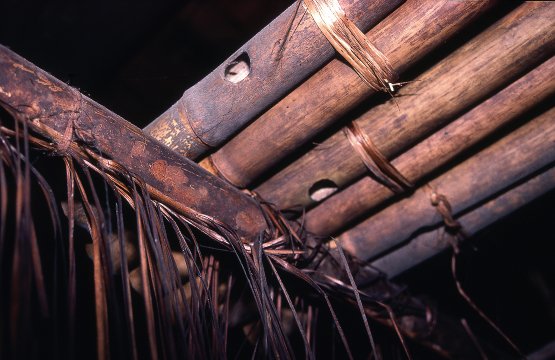 |
| 197. So, since religion is the responsibility of men only, the long flutes are hidden in the roof of the men’s house, where women never see them. |
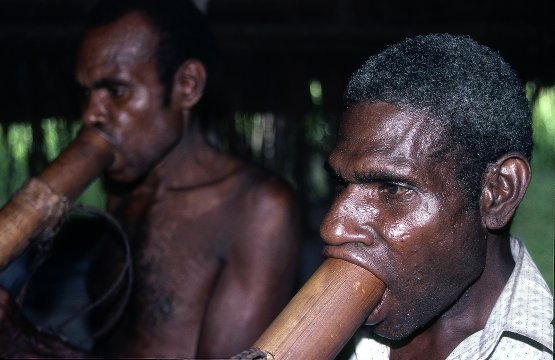 |
| 198. Both types of flutes are made from bamboo, usually about 5cm in diameter. The short ones are played like a trumpet: the player holds the end in his mouth and sings into it. |
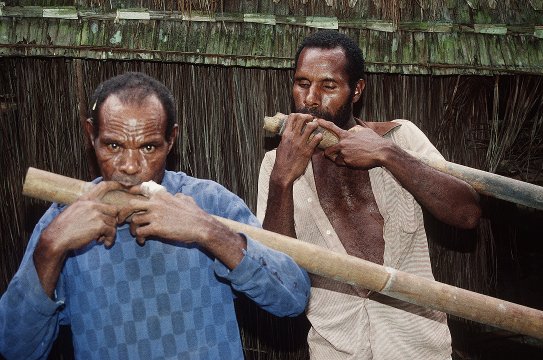 |
| 199. The long ones are played in much the same way as conventional flutes, by blowing across the hole. |
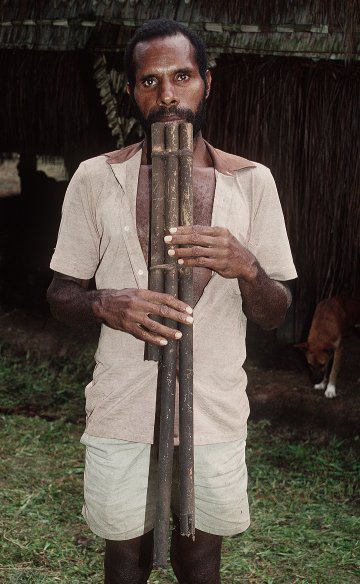 |
| 200. And this is also true of pan pipes … made of lighter bamboo. (Also see video extract number12) |
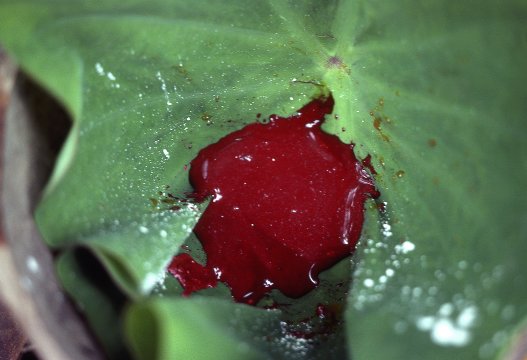 |
| 205. Next they add powdered lime, made from seashells and obtained through trade. This has the same effect as it does when mixed with betel nut in the mouth, turning the mixture a bright red. |
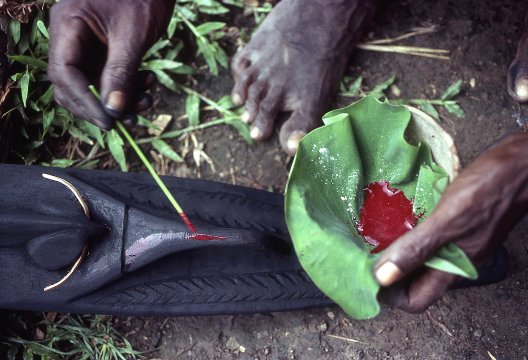 |
| 206. The paint is then applied using a twig crushed at one end … a broad brush for large areas, and a finer one for details. |
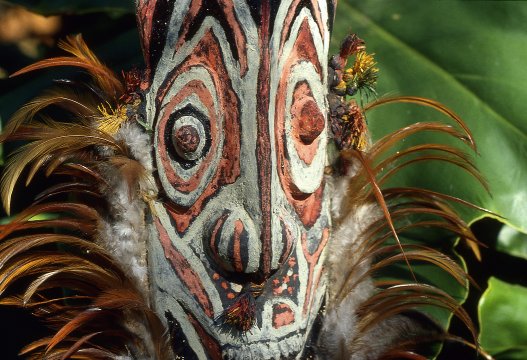 |
| 207. Shells, tusks, feathers and string (even human hair) may then be used to finish things off. |
![]()

![]()
Back to
Cultures in Context Intro: Photos & Recordings
![]()
Text, photos and recordings
by John Tyman
Intended for Educational Use
Only.
Copyright Pitt Rivers Museum,
Oxford University, 2010.
Contact Dr.
John Tyman for more information regarding licensing.
![]()
Photo processing, Web page layout,
formatting, and complementary research by
William Hillman ~ Brandon, Manitoba
~ Canada
www.hillmanweb.com